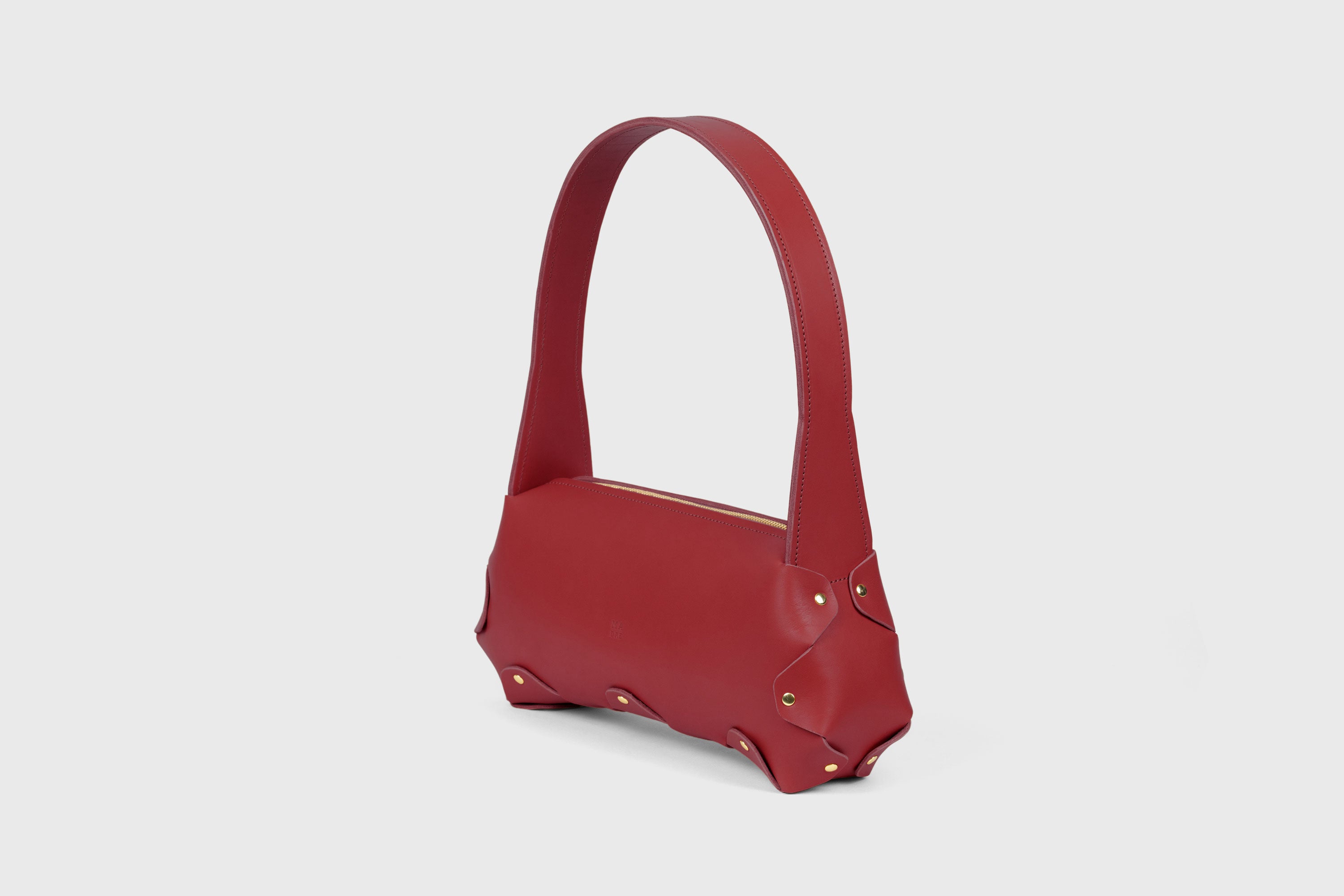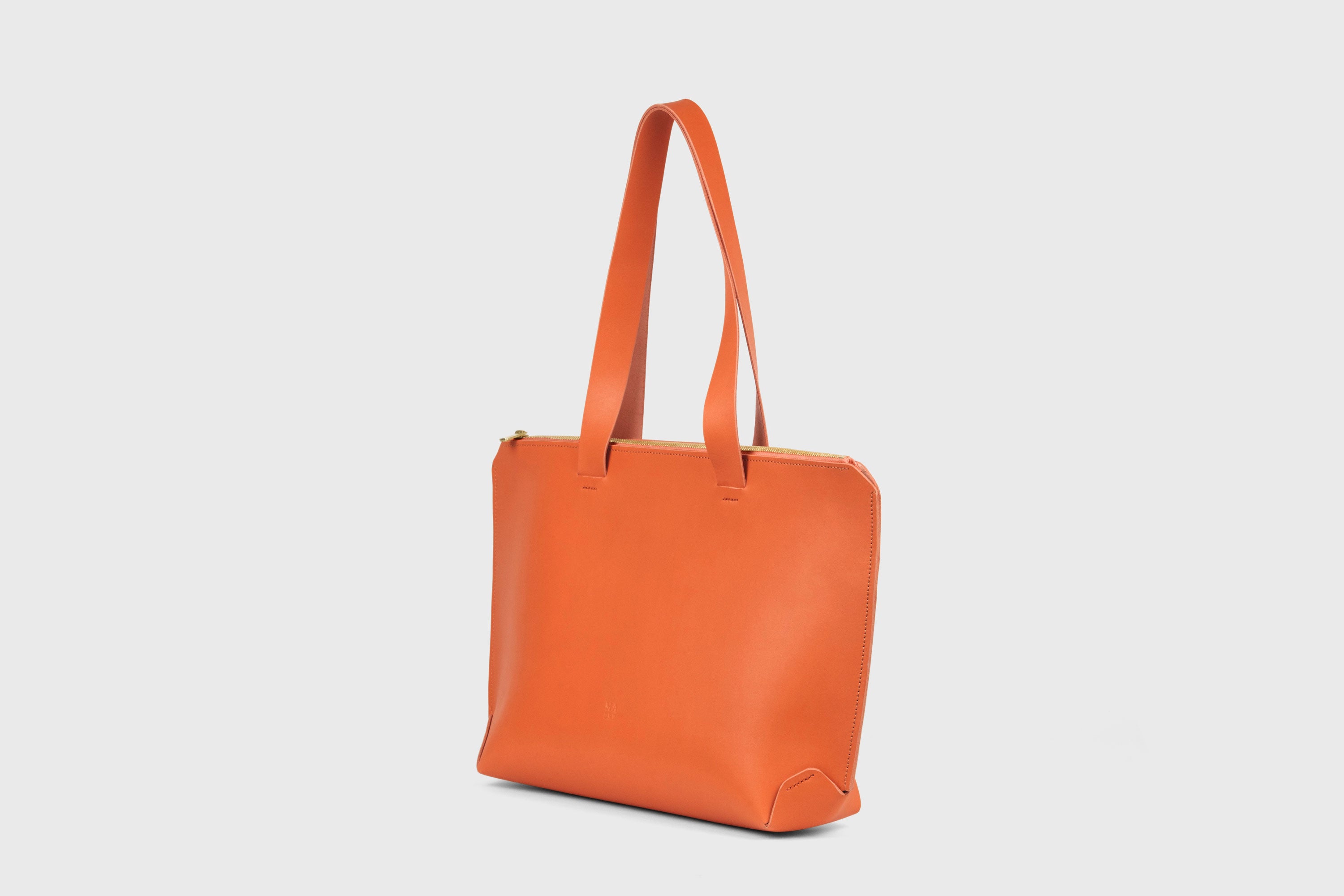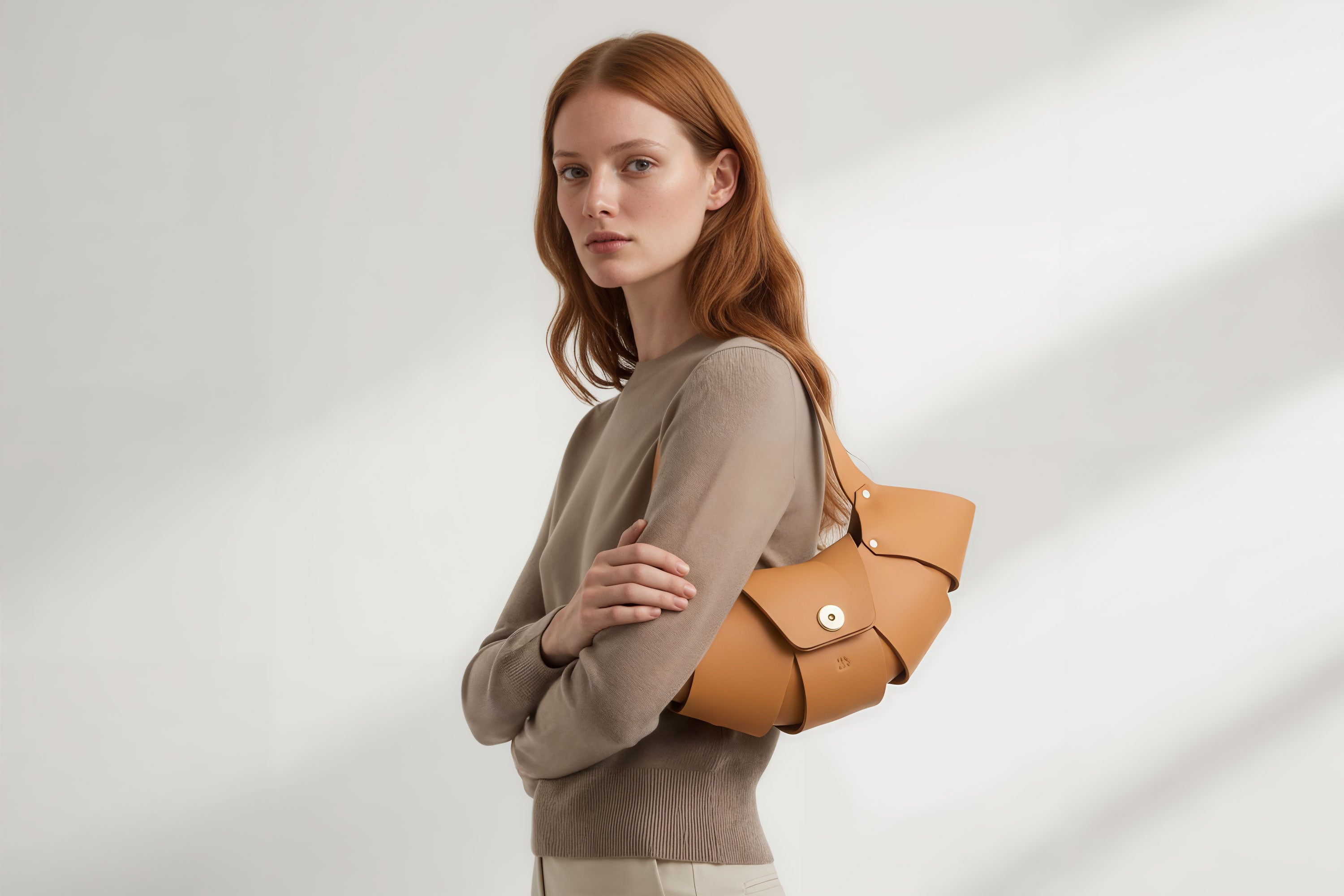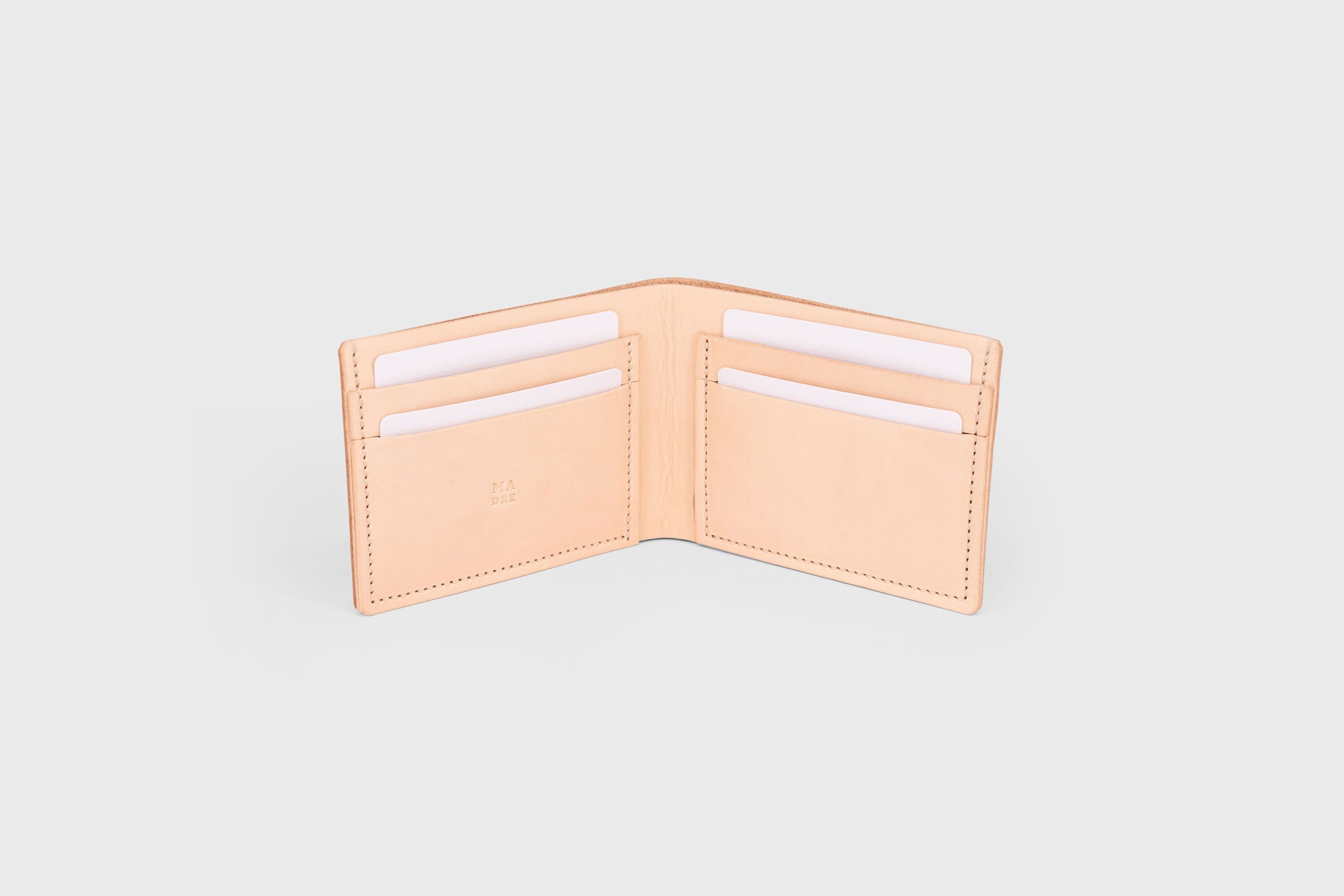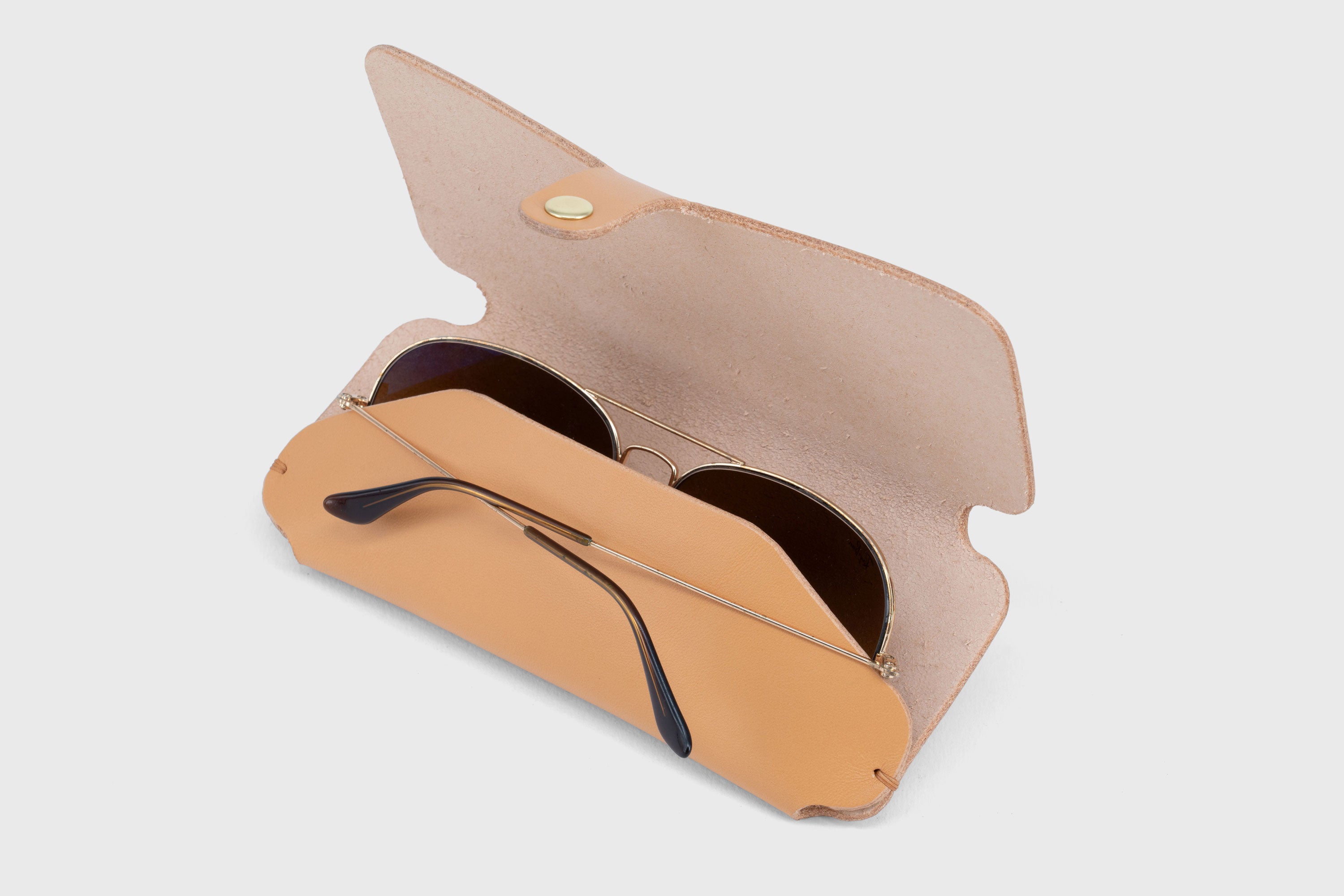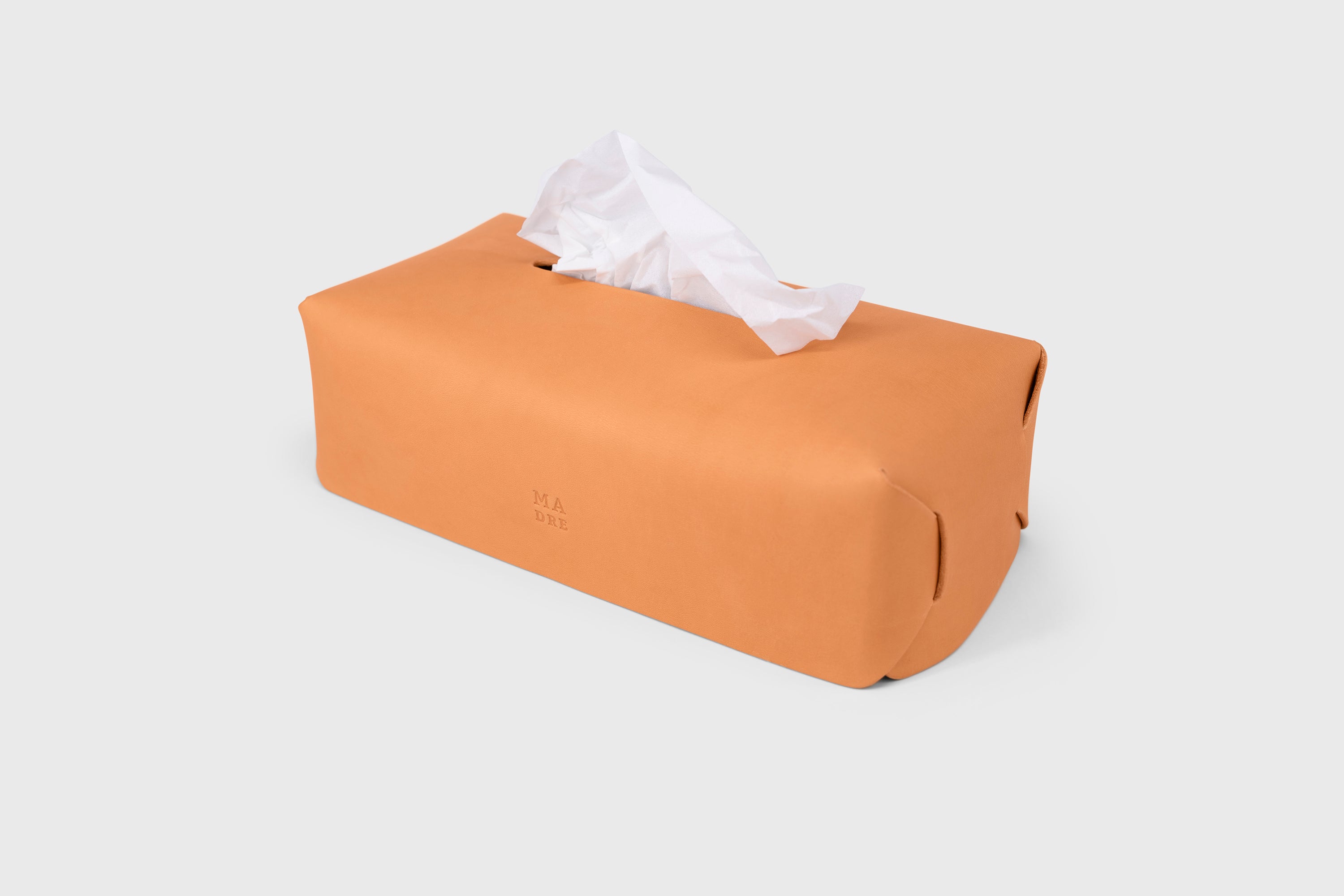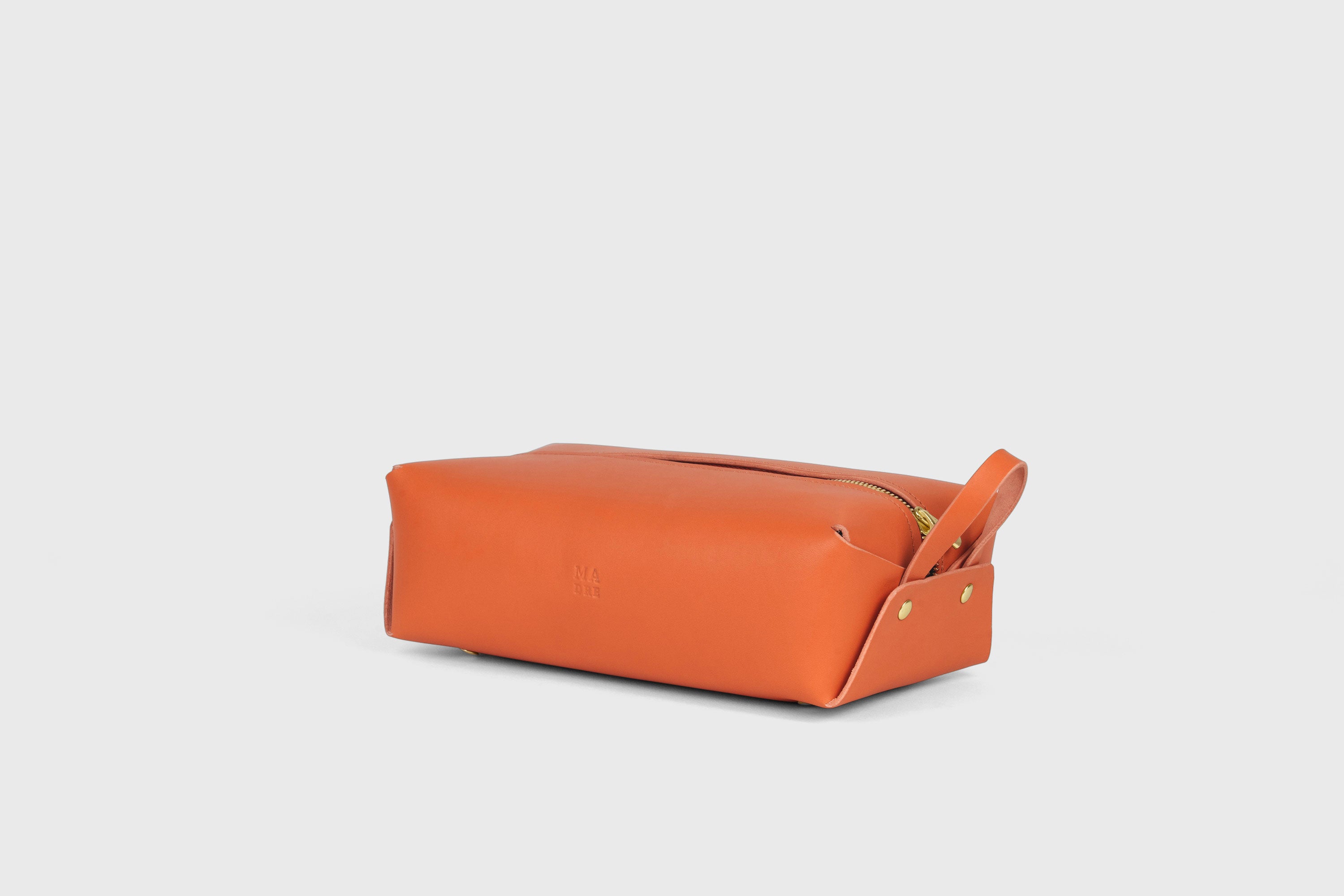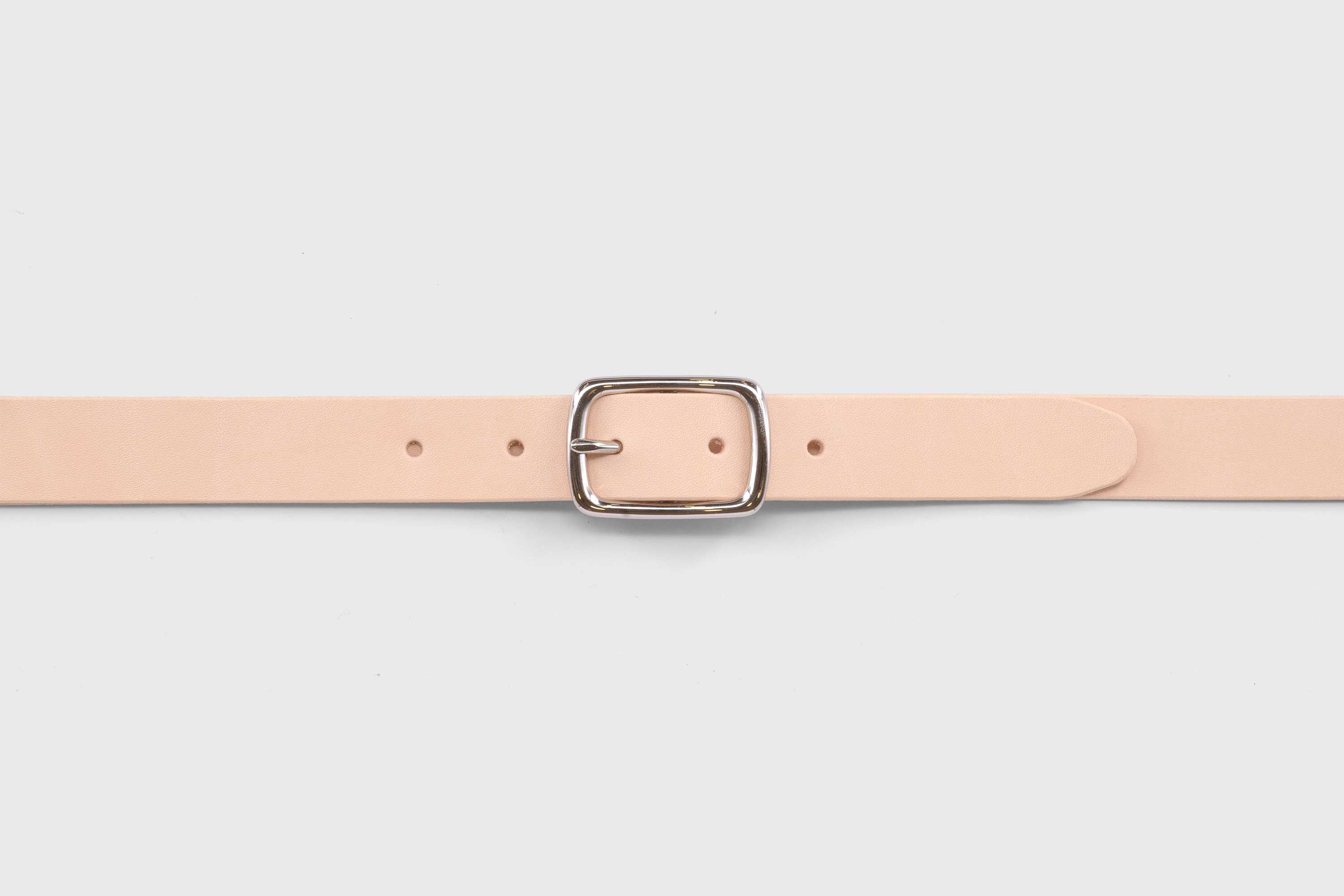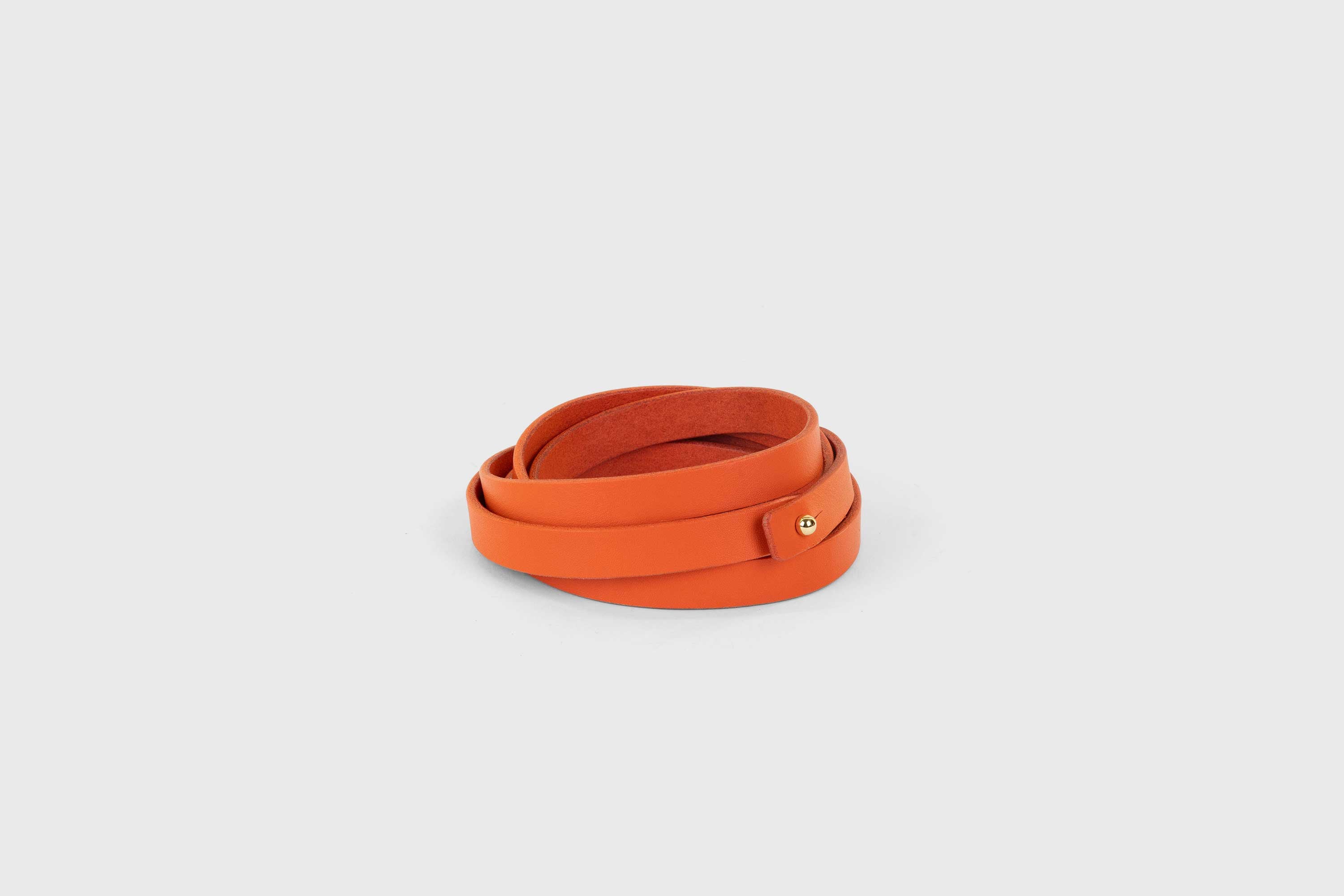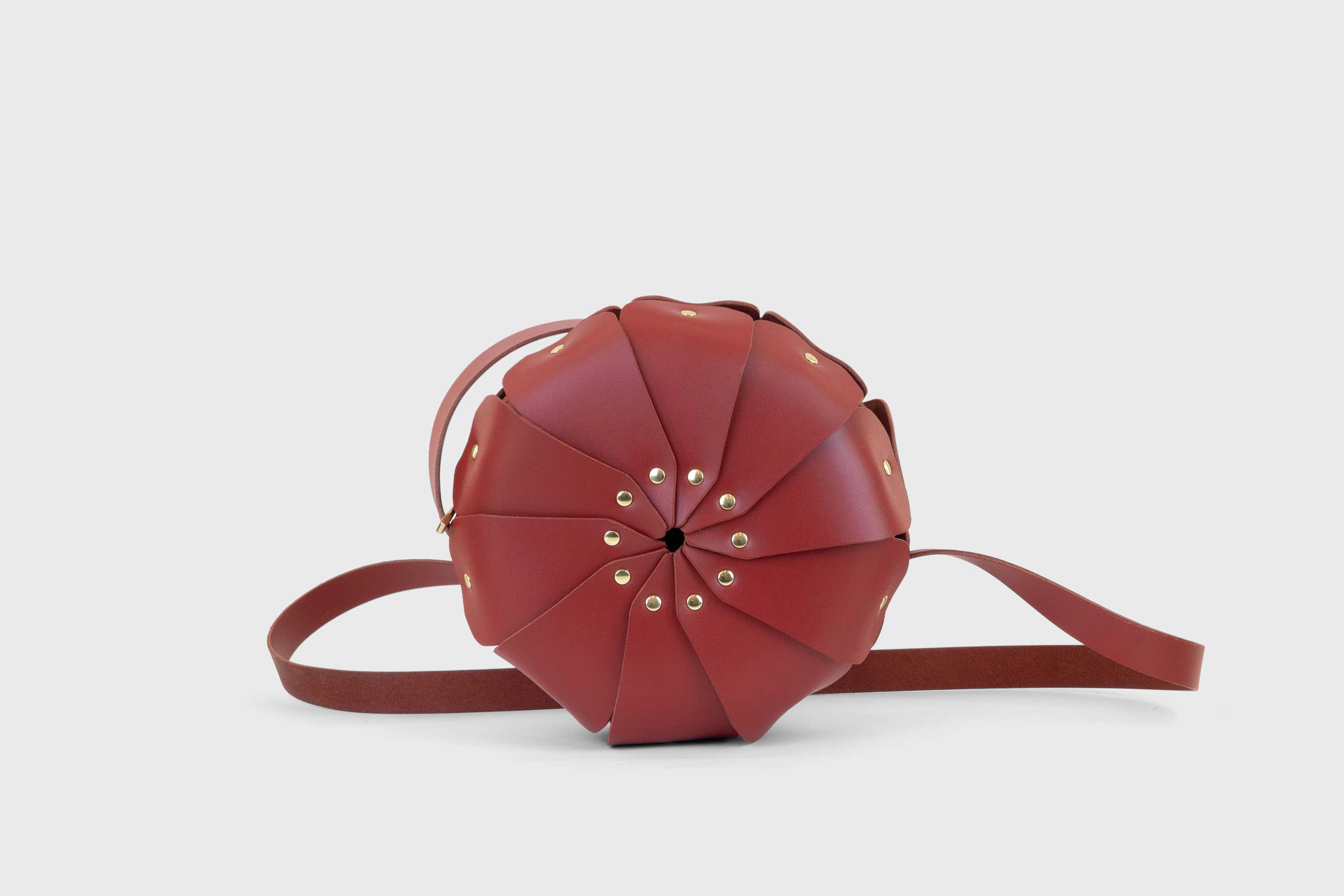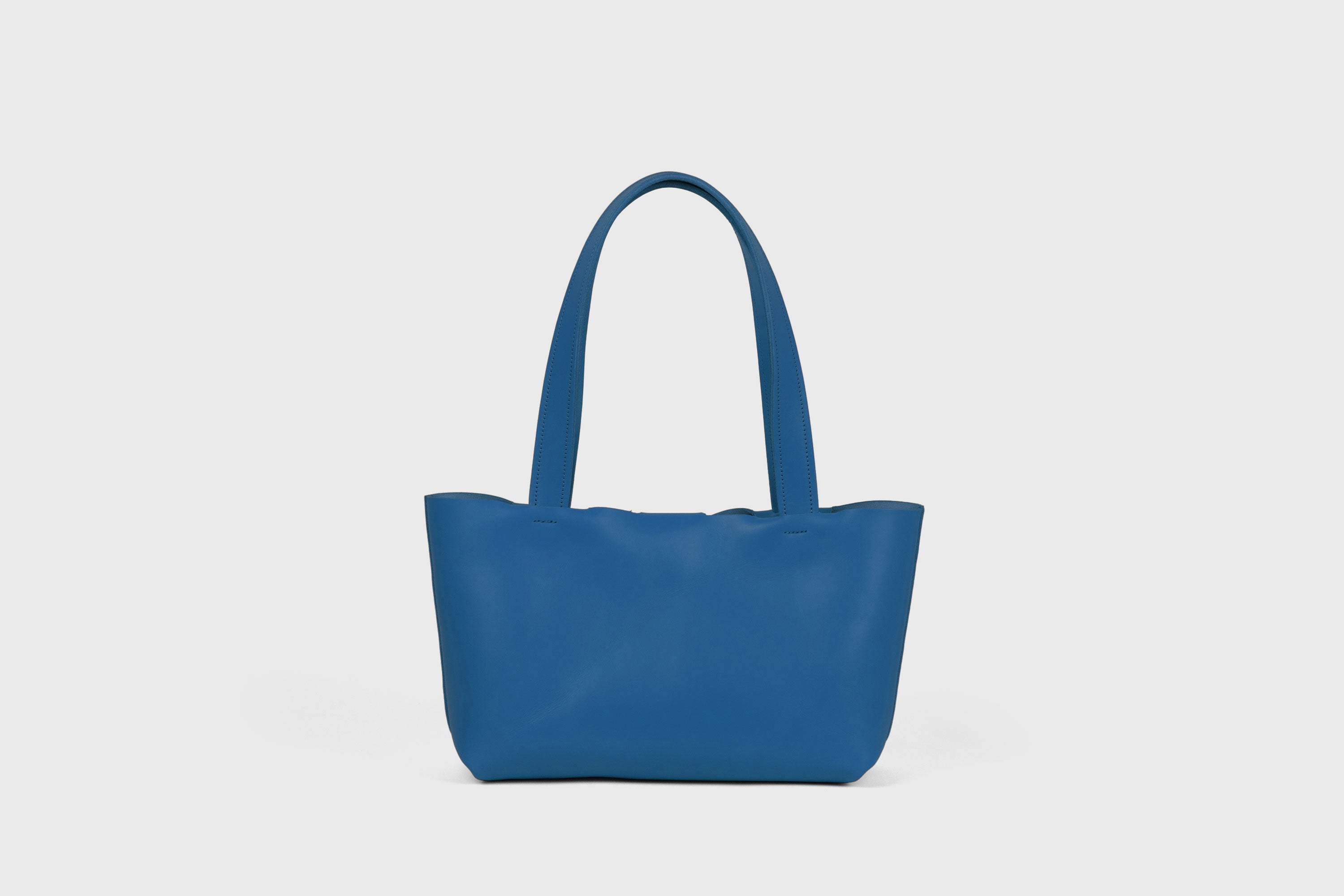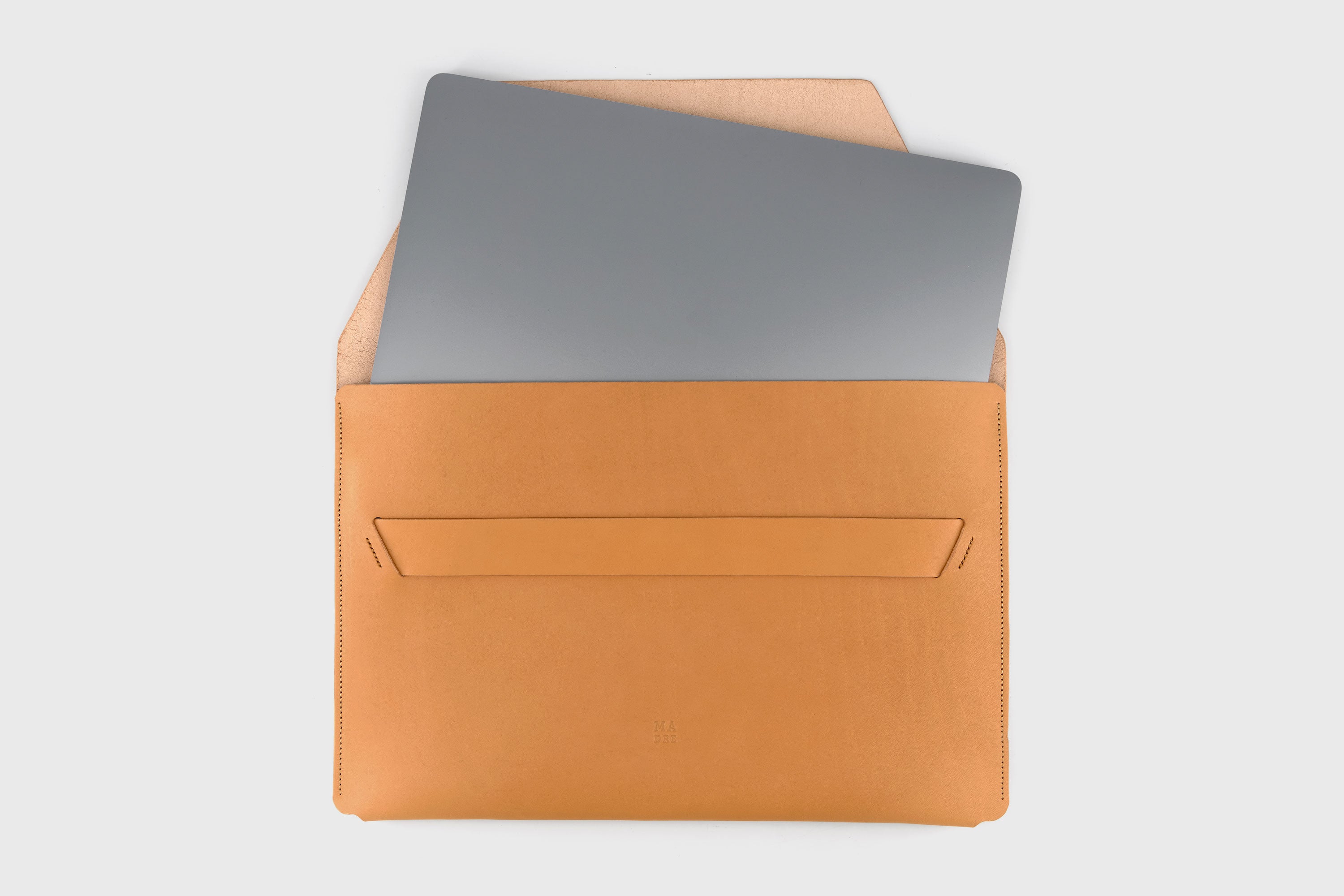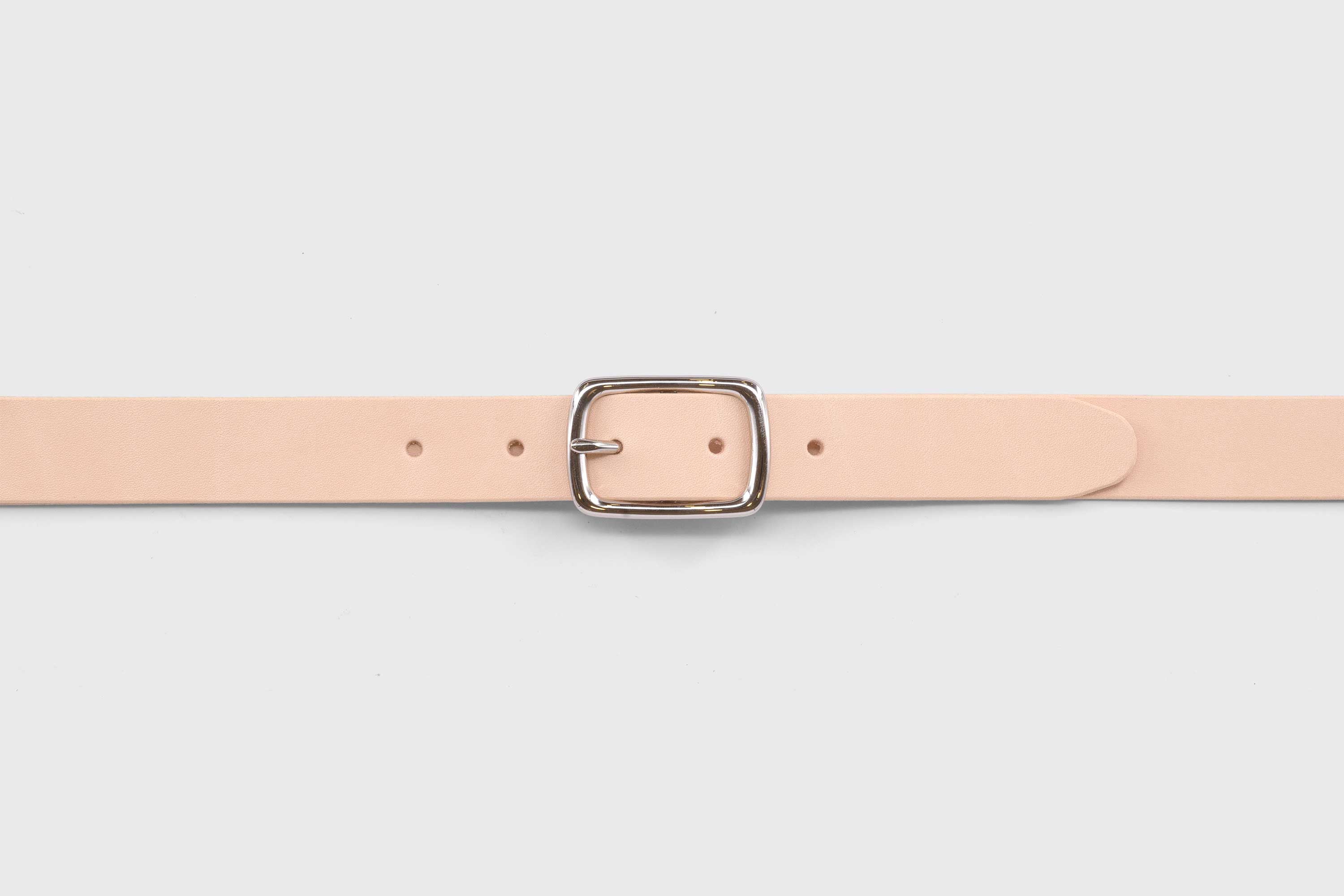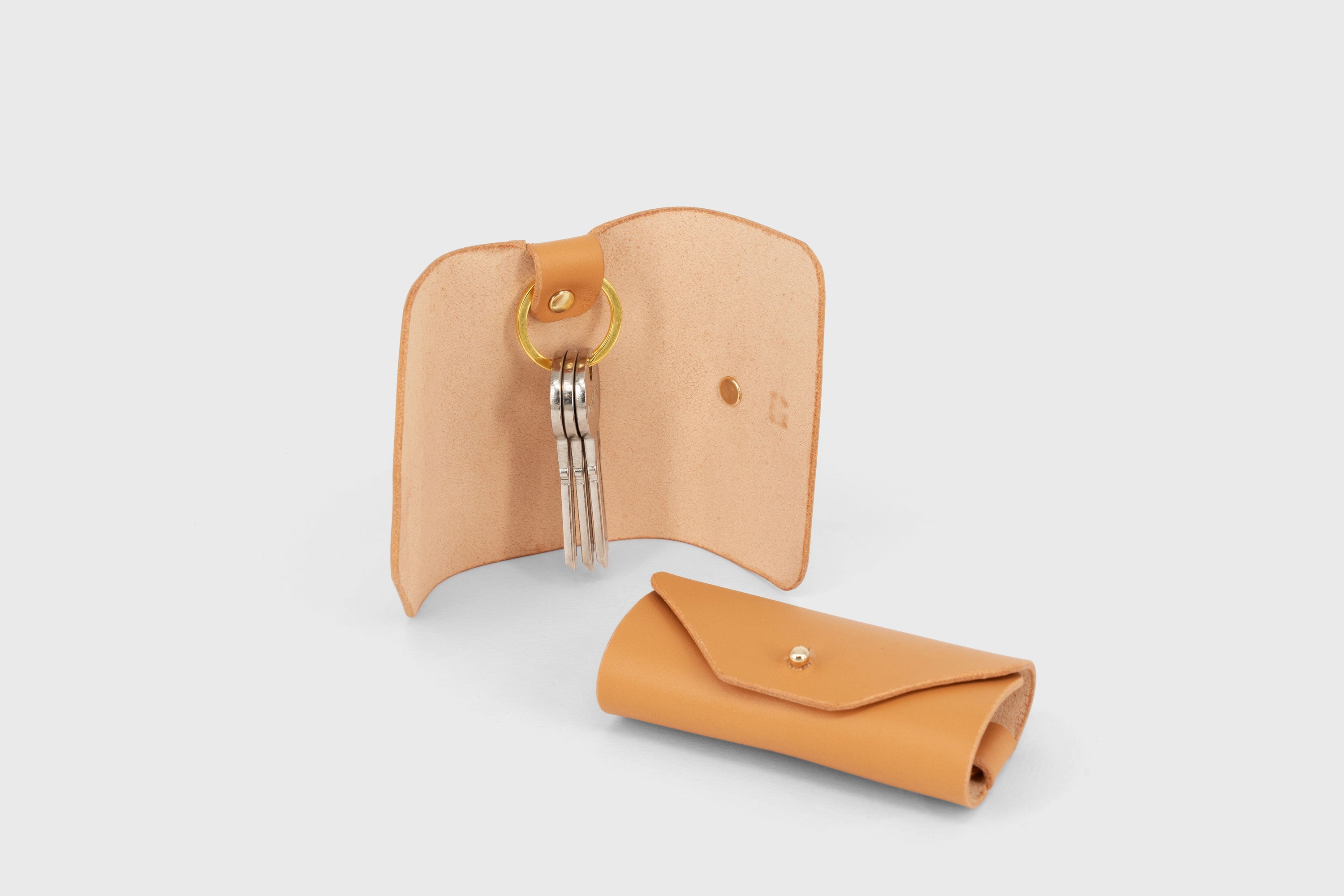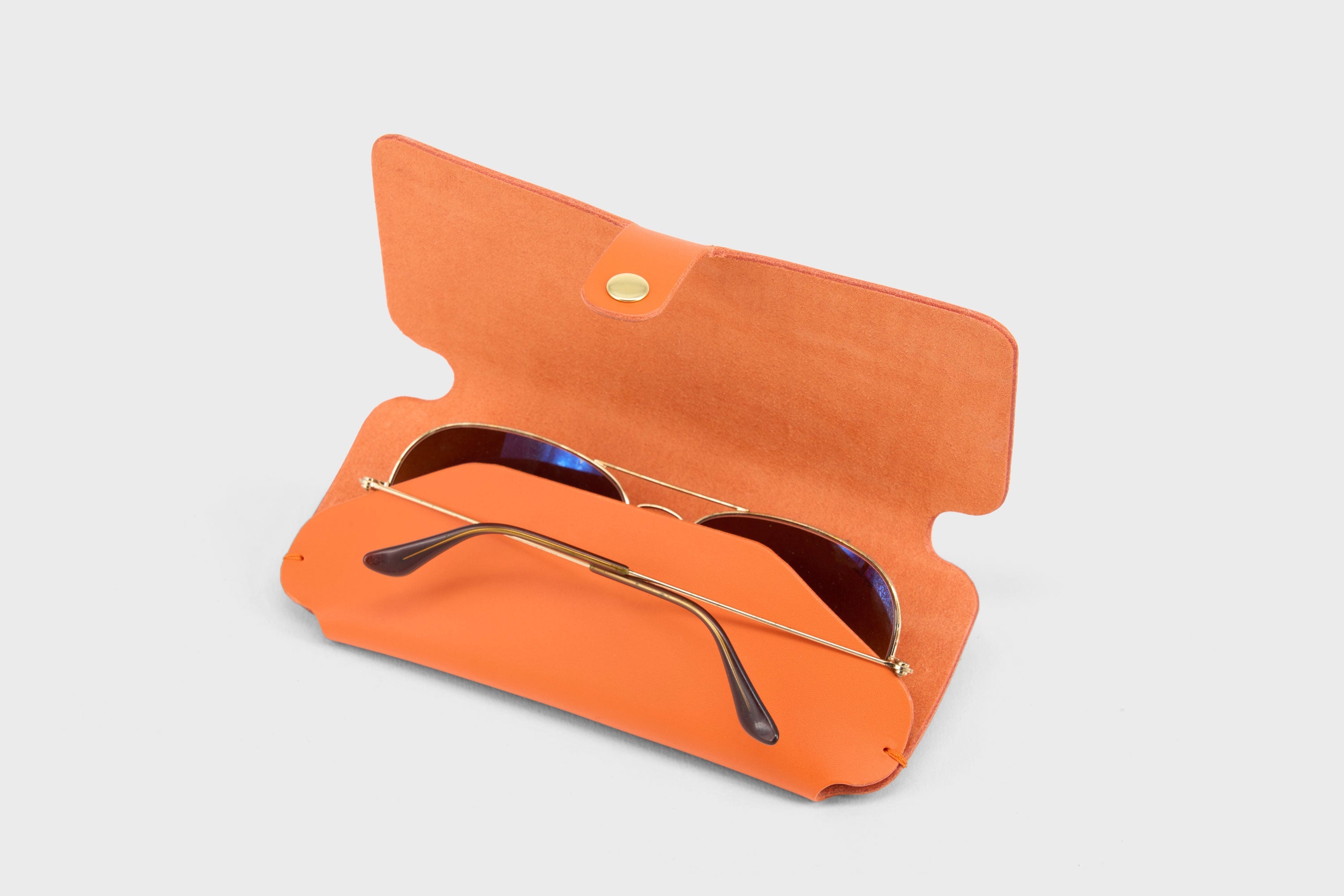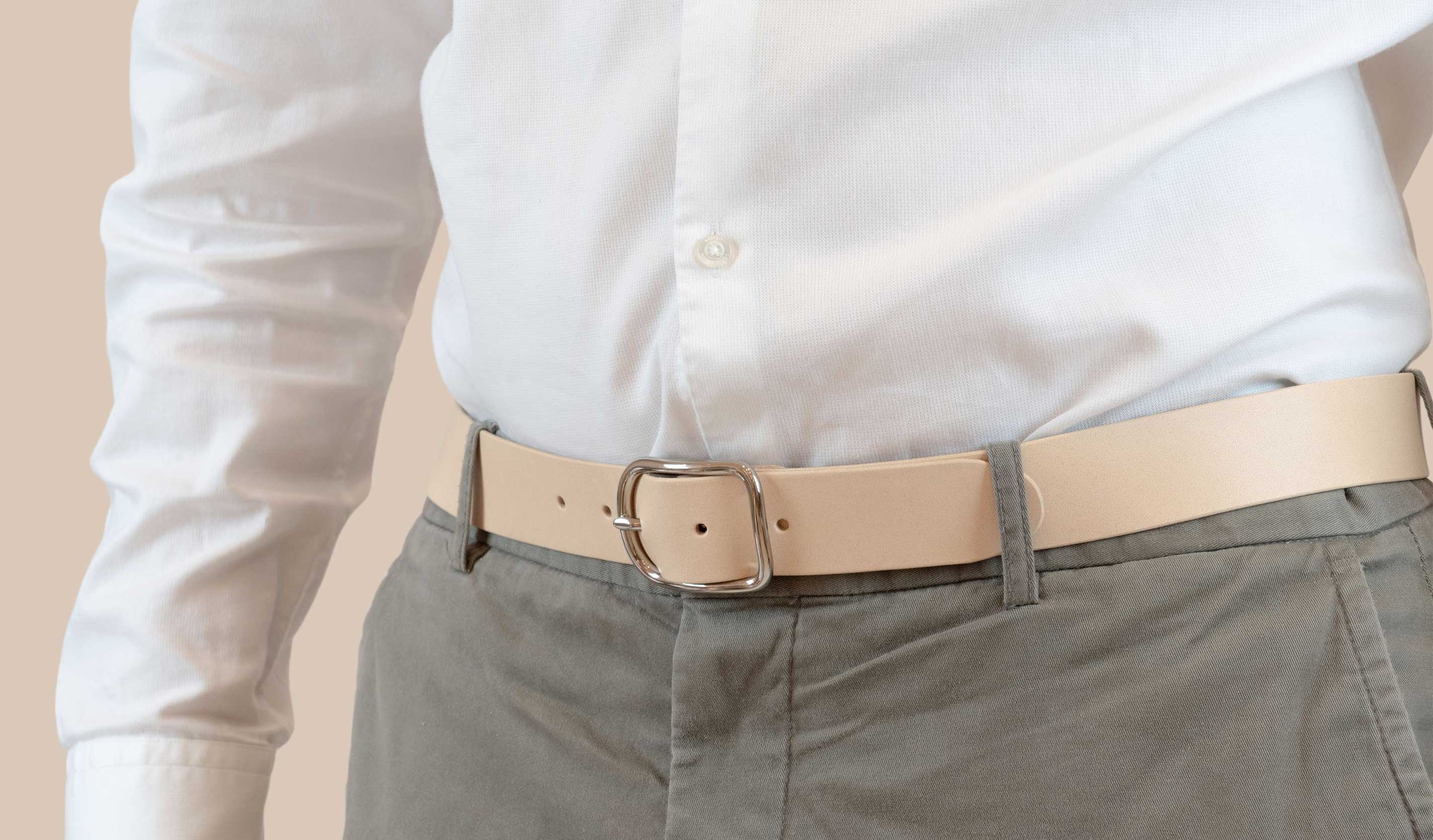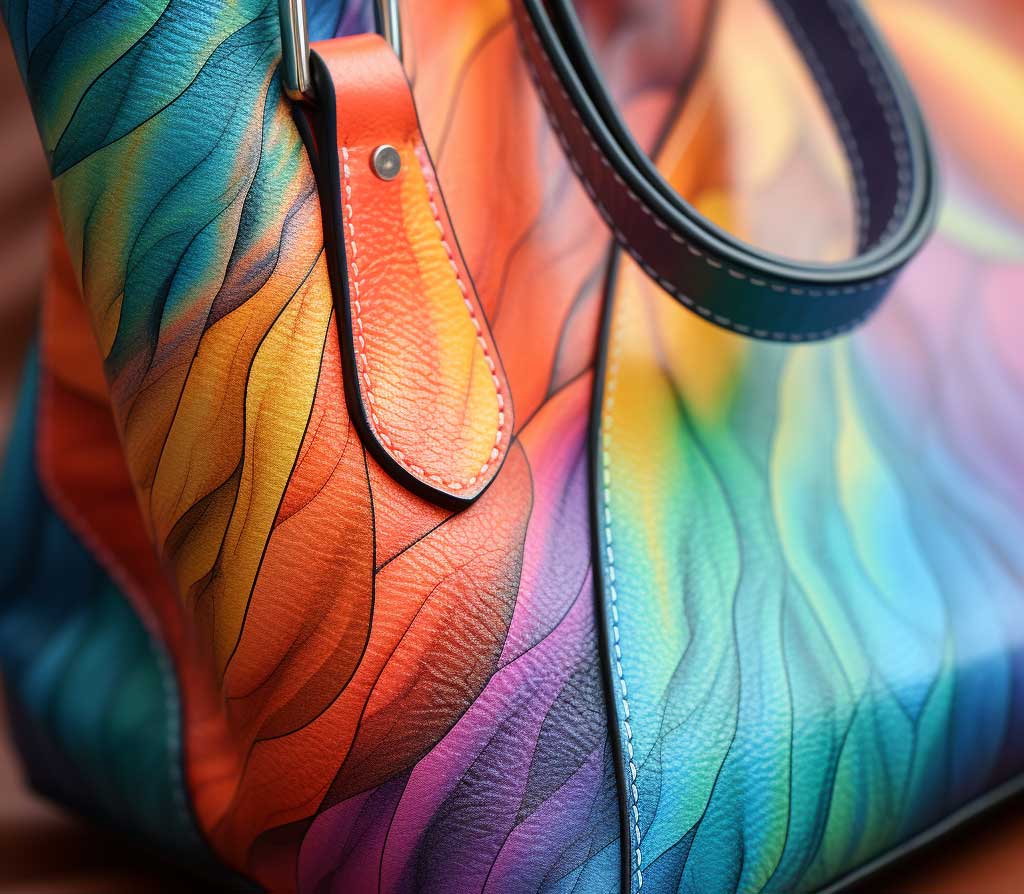
Nappa Leather: Your Comprehensive Guide to Understanding, Maintaining, and Utilizing Nappa Leather Products
Leather holds a timeless appeal that is as varied as it is versatile, with Nappa leather being one such variant that stands out for its refined quality.
Nappa leather is known for its soft texture and durability. It is a full grain leather, meaning it is derived from the outermost layer of an animal hide and preserves the natural characteristics of the hide. Nappa leather is usually made from lamb, kid, or calf hides, though it can also be made from other animals.
Thanks to its softness and pliability, Nappa leather has found wide application across a multitude of leather goods, from gloves and wallets to luxury car interiors. Its full-grain status allows for breathability, resilience, and a beautiful aesthetic that ages gracefully. However, what sets Nappa leather apart is its chrome tanning process, which we will delve into later in this blog.
Whether you're a seasoned leather aficionado or just starting to appreciate the world of leather goods, understanding what Nappa leather is and its unique attributes can help you make informed decisions about your purchases. So, let's delve deeper into the world of Nappa leather and explore its fascinating origin, characteristics, and uses in the fashion industry.
The Origin and History of Nappa Leather
The story of Nappa leather dates back to the mid-20th century. It's named after Napa, California, where it was first created by Emanuel Manasse in 1875 for the Sawyer Tanning Company. Manasse, a German immigrant, worked as a tanner and currier, and his creation of Nappa leather marked a significant moment in the history of leather making.
Nappa leather was an innovation in the field due to its distinctively soft and pliable texture. While leather has been a staple material throughout human history, Nappa's unique attributes quickly set it apart and made it a desirable choice for various applications.
Over the years, the term 'Nappa' has become more generalized and now refers to any soft, full-grain leather, regardless of its tanning method. However, the true Nappa leather as we know it today is often produced through chrome tanning, which is what gives it its characteristic softness, durability, and water resistance.
The evolution of Nappa leather and its adoption by the fashion industry around the globe further underscores the versatility and timeless appeal of leather. As we dive deeper into the specifics of its production process in the next section, you'll come to appreciate why Nappa leather continues to hold its position as one of the premium choices in the realm of leather goods.
Production Process of Nappa Leather
Creating Nappa leather is a multi-step process that revolves around a method called chrome tanning. The result is a soft, pliable, and robust material that is highly sought after in the fashion industry. But what does the chrome tanning process entail? Let's dive in.
Firstly, the raw hides are carefully cleaned and prepared. This includes removing hair and any remaining flesh from the hide, a process known as fleshing. The hides are then soaked to remove impurities and to restore their natural moisture levels.
Next, the hides undergo a process called pickling, where they are soaked in a solution containing salt and sulfuric acid to lower their pH, making them more receptive to the tanning agent.
Then comes the actual tanning process. The pickled hides are placed into a drum containing a solution of water and chromium salts. As the drum rotates, the chromium salts penetrate the hides. This process can last several hours, depending on the desired end product. The chromium salts bind to the collagen fibers in the hide, making them resistant to bacterial decay, heat, salt, and water damage.
Once the tanning process is complete, the hides are neutralized with a bicarbonate solution to raise their pH levels, then dyed, and fatliquored—a process that involves applying oils and fats to restore suppleness.
The last stages involve drying, softening, and finishing. Drying can be achieved by hanging the hides, vacuum drying, or toggling them onto frames. The leather is then softened mechanically, and finishing treatments are applied to achieve the desired aesthetic qualities.
Nappa leather, with its characteristic softness and durability, is a testament to the intricate processes that go into its production. As we delve deeper into its features in the next section, you will gain a greater appreciation for why this type of leather holds a special place in the world of fashion and beyond.
Key Features of Nappa Leather
Nappa leather's esteemed reputation in the fashion industry and beyond stems from its distinctive attributes. These characteristics contribute to its widespread use in various products, from clothing and accessories to automobile interiors. Here are the key features that define Nappa leather:
1. Softness and Smoothness: Nappa leather is renowned for its exceptional softness and smooth texture, a result of the chrome tanning process it undergoes. This makes it a preferred choice for luxury items where touch and feel are essential, such as gloves, jackets, handbags, and car seat upholstery.
2. Durability: Despite its softness, Nappa leather is remarkably durable. It's made from full-grain leather, which is the highest quality of leather available. The natural grain is retained in the leather, enhancing its strength and breathability. These qualities also allow Nappa leather to age gracefully, acquiring a pleasing patina over time.
3. Flexibility: Nappa leather is highly flexible and stretchable, making it ideal for applications that require moulding and shaping, like footwear and certain types of bags.
4. Resistance: Thanks to the chrome tanning process, Nappa leather displays a considerable degree of water, heat, and salt resistance. This makes it suitable for use in diverse environments and increases its longevity.
5. Luxurious Appeal: There's no denying the luxurious appeal of Nappa leather. Its smooth, soft touch, coupled with its natural luster, lends a high-end feel that's hard to replicate. This, coupled with its durability and flexibility, makes Nappa leather a top choice for luxury brands and discerning consumers alike.
In the next section, we will compare Nappa leather with vegetable-tanned leather, another highly respected variety of leather, to further understand their different benefits and potential applications.
Comparing Nappa Leather and Vegetable-Tanned Leather
Both Nappa and vegetable-tanned leather are high-quality materials used in the production of a wide range of goods, from bags and shoes to belts and jackets. While both share certain qualities due to their full-grain status, they differ in many respects, primarily due to the different tanning methods used.
Nappa Leather: As we've discussed, Nappa leather is typically chrome-tanned. This process gives it a softer, more flexible texture and a slight sheen. Nappa leather is also more resistant to water, heat, and salt, making it suitable for a variety of environments and applications. However, chrome-tanned leather is less eco-friendly than vegetable-tanned leather due to the chromium salts used in its production, which can be harmful if not managed properly.
Vegetable-Tanned Leather: Vegetable-tanned leather, as the name suggests, is tanned using natural materials like tree bark and leaves. This process results in a more rigid and durable leather with a distinct natural aroma. Unlike Nappa leather, vegetable-tanned leather can take weeks or even months to produce, leading to a higher price point. The color of vegetable-tanned leather also deepens and evolves over time, developing a unique patina. As vegetable tanning uses organic materials, it is considered more eco-friendly than chrome tanning.
In terms of application, Nappa leather's softness makes it a perfect choice for items that prioritize comfort and luxury, such as high-end car seats, gloves, and fashion accessories. On the other hand, the robustness and durability of vegetable-tanned leather make it an ideal choice for products such as belts, wallets, and bags that require more structure and longevity.
While Atelier Madre is committed to producing vegetable-tanned leather goods due to its durability and eco-friendliness, we acknowledge the unique benefits of Nappa leather and its wide applications in the fashion industry. In the next section, we'll look at how to care for and maintain Nappa leather products to ensure their long-term value.
Caring for Nappa Leather Goods
Investing in a Nappa leather product is a choice for quality and durability. To ensure that your items retain their beauty and functionality over time, it's crucial to understand how to care for them properly. Here are some tips to keep your Nappa leather goods in the best possible condition:
1. Regular Cleaning: Nappa leather should be cleaned regularly to prevent the buildup of dust and grime. Use a soft, dry cloth to gently wipe the surface. For more stubborn stains, use a specially formulated leather cleaner. Always test any cleaning product on an inconspicuous area first to ensure it doesn't discolor the leather.
2. Conditioning: Conditioning is key to maintaining the softness and flexibility of Nappa leather. A good leather conditioner will help to moisturize the leather, prevent drying and cracking, and restore its natural luster. Apply a conditioner every few months, or more often if the leather is exposed to harsh conditions.
3. Storage: When not in use, store your Nappa leather goods in a cool, dry place out of direct sunlight. Too much heat or exposure to sunlight can cause the leather to fade or become dry and brittle. Consider using a dust bag or a natural fabric cover to protect your items from dust and moisture.
4. Avoid Water Exposure: While Nappa leather is more water-resistant than many other types of leather, it's still best to avoid prolonged exposure to water. If your leather item gets wet, blot it gently with a soft, dry cloth and allow it to air dry naturally. Never use a heat source to speed up the drying process, as this can cause the leather to shrink or become misshapen.
5. Professional Care: For significant stains or damage, consider seeking professional help. Leather care specialists have the knowledge and tools to restore your items without causing further damage.
Remember, Nappa leather is a natural material that ages and evolves over time. With the right care, your Nappa leather goods can develop a beautiful patina and character that reflects their journey with you. In the following section, we'll explore some common applications of Nappa leather in various industries.
Common Applications of Nappa Leather
The excellent qualities of Nappa leather make it a popular choice in various industries. Its smooth texture, durability, and luxurious appeal contribute to its widespread use. Let's explore some common applications:
1. Fashion: In the fashion industry, Nappa leather is a beloved material for high-end products. Designers use it for bags, shoes, jackets, and gloves, where the softness and luxury of the material can be fully appreciated. The flexible nature of Nappa leather also allows designers to create intricate designs and styles that would be challenging with more rigid leathers.
2. Automotive Industry: The automotive sector has a particular fondness for Nappa leather, especially in the luxury car segment. Car manufacturers use it for seat upholstery, steering wheel covers, and interior trims for a plush, comfortable driving experience. Its resistance to heat and cold is an added advantage in this application.
3. Home Décor and Furniture: The luxurious appeal of Nappa leather extends to the home décor and furniture industry, where it's used for items like sofas, chairs, and pillows. Its durability ensures the products can withstand everyday wear and tear while retaining their elegant look.
4. Tech Accessories: More recently, Nappa leather has found its way into the tech world, adorning premium headphones, laptop bags, and smartphone cases. These accessories combine the functionality of protecting delicate devices with the style and sophistication of high-quality leather.
5. Luxury Goods: From high-end luggage to premium watch straps, Nappa leather's softness and luxurious feel make it a preferred choice in the creation of a variety of luxury goods.
Even though Nappa leather is a common material for these products, the quality and craftsmanship that go into creating each item can differ significantly. At Atelier Madre, we maintain high standards of craftsmanship in all our products, even those not made from vegetable-tanned leather. In the next section, let's explore some unique Nappa leather items that Atelier Madre offers.
Why Car Manufacturers Prefer Nappa Leather for Seats
Luxury car manufacturers often opt for Nappa leather when it comes to interior seating. The reasons behind this preference are multifaceted and center around the unique attributes that Nappa leather brings to car interiors.
1. Unmatched Luxury and Comfort: Nappa leather is renowned for its ultra-soft, buttery texture, which adds a plush, luxurious feel to car interiors. The material is not just about aesthetics; it's also about comfort. Sitting on Nappa leather seats during a long drive provides a level of comfort that few other materials can match.
2. High Quality and Durability: Despite its softness, Nappa leather is remarkably durable. When properly cared for, it resists wear and tear remarkably well, maintaining its color and texture over time. This longevity makes Nappa leather a cost-effective choice for car manufacturers as it ensures the vehicle's interior remains attractive and comfortable for many years.
3. Breathability: Nappa leather is highly breathable. This quality means that it doesn't become too hot in the summer or too cold in the winter, a significant advantage when used for car seating.
4. Versatility in Design: Nappa leather is versatile and can be dyed in a variety of colors. This flexibility allows car manufacturers to create diverse and appealing interior designs that can be tailored to the tastes of individual buyers.
5. Easy Maintenance: While Nappa leather requires care to keep it in top condition, its maintenance is relatively straightforward and can be easily done using leather-specific cleaning and conditioning products. This ease of maintenance is another reason why it's a popular choice for car seating.
6. Enhanced Resale Value: Cars with Nappa leather interiors often command higher resale values. The enduring appeal and longevity of Nappa leather seats make them a worthy investment, enhancing the car's desirability and potential resale price.
In conclusion, Nappa leather is a preferred choice for car seats among manufacturers due to its combination of luxury, comfort, durability, breathability, design versatility, easy maintenance, and potential to enhance resale value. It represents a blend of practicality and sophistication that greatly contributes to the overall driving and ownership experience.
Pros of Nappa Leather
Soft and Smooth: Nappa leather is known for its exceptional softness and smooth texture, providing a luxurious feel that is comfortable to the touch.
Durability: Being a full-grain leather, Nappa leather is very durable. It can withstand wear and tear over time, making it ideal for items that see regular use like handbags, wallets, and upholstery.
Versatility: Due to its softness and flexibility, Nappa leather can be used in a variety of products. It's often used in high-end luxury items such as handbags, shoes, gloves, and car interiors.
Easy to Clean: Nappa leather is relatively easy to maintain. Regular dusting and wiping with a damp cloth can keep it looking fresh. Specialized leather cleaners can be used for deeper cleaning.
Cons of Nappa Leather
Cost: Nappa leather is more expensive than many other types of leather due to its high quality and the complex process involved in its production.
Sensitive to Scratches: While it is durable, Nappa leather is also prone to scratches and scuffs because of its softness. This may require you to be more careful when using Nappa leather items.
Susceptible to Stains: Nappa leather can absorb liquids and oils, making it susceptible to stains. While some Nappa leather items are treated for stain resistance, spills should be wiped off immediately to prevent staining.
Environmental Impact: The tanning process for Nappa leather, which uses chromium salts, can be harmful to the environment if not managed properly. However, many manufacturers are taking steps to improve the environmental sustainability of their production processes.
How to Clean Nappa Leather
One of the essential aspects of caring for your Nappa leather items is regular cleaning. Because of its soft and absorbent nature, Nappa leather can be susceptible to stains and grime. Here's how to clean and care for your Nappa leather goods to keep them looking their best:
1. Regular Dusting: Dust can settle on the surface of your Nappa leather goods, dulling their shine over time. Use a dry, soft cloth to regularly wipe down the leather and keep it free from dust and dirt.
2. Immediate Spill Cleanup: As soon as a spill occurs, use a dry cloth to blot (not wipe) the liquid. This action should minimize absorption and prevent a potential stain. Avoid rubbing, as this can spread the liquid and cause it to seep deeper into the leather.
3. Use Specialized Leather Cleaner: For stains or accumulated grime, use a specialized leather cleaner. Apply a small amount of the cleaner on a soft cloth, then gently rub it over the stained area in a circular motion. Always test the cleaner on an inconspicuous area first to ensure it doesn't cause discoloration.
4. Let Air Dry: If your Nappa leather item becomes wet, let it air dry naturally. Never use heat, such as a hairdryer or placing it near a heater, as this can dry out and crack the leather.
5. Conditioning: Nappa leather benefits from periodic conditioning to keep it soft and supple. Use a high-quality leather conditioner, applying it sparingly with a soft cloth. Always test the conditioner on a hidden area first.
6. Professional Cleaning: For stubborn stains or when in doubt, it might be best to take your Nappa leather goods to a professional. They have the skills and appropriate tools to clean and restore your items without causing damage.
Remember, the key to keeping your Nappa leather items looking their best is regular and proper maintenance. By spending a little time on upkeep, you'll ensure your Nappa leather continues to look luxurious and last for many years.
How to Condition Nappa Leather
Conditioning Nappa leather is an essential step in maintaining its softness, flexibility, and overall luxurious appearance. Below are steps you can follow to properly condition your Nappa leather goods:
1. Clean First: Before you begin conditioning, ensure your Nappa leather item is clean. You can follow the cleaning steps mentioned earlier to remove any dirt or dust that may have accumulated on the surface.
2. Choose a High-Quality Leather Conditioner: Not all leather conditioners are the same. Opt for a high-quality conditioner that's suitable for Nappa leather. When in doubt, it's always a good idea to seek advice from the manufacturer or a leather goods professional.
3. Test on a Hidden Area: Just like with the leather cleaner, you should always test the conditioner on a small, inconspicuous area of the leather item. This step is necessary to ensure that the conditioner won't cause any discoloration or damage.
4. Apply Sparingly: Apply the conditioner sparingly on a soft cloth, then gently rub it into the leather in a circular motion. It's important not to overdo it. A little conditioner goes a long way, and applying too much can cause the leather to become overly soft or oily.
5. Let it Absorb: Allow the conditioner to absorb into the leather for about 10-15 minutes, then wipe off any excess with a dry cloth. It's important not to use the item immediately after conditioning. Giving the conditioner ample time to penetrate the leather will yield the best results.
6. Regular Conditioning: Depending on how frequently you use the item and your local climate, conditioning your Nappa leather goods every 2-3 months can help maintain their plushness and prevent them from drying out.
Remember, while conditioning your Nappa leather is essential, it's just as important to use the right products and not over-condition. With the correct care and attention, your Nappa leather items will remain soft, lustrous, and last a lifetime.
How to Fix a Scratch on Nappa Leather
Nappa leather's smooth and soft texture can make it somewhat susceptible to scratches. However, minor scratches can often be treated at home with a few simple steps:
1. Clean the Area: Before you begin, clean the scratched area using a specialized leather cleaner to ensure no dirt or dust is trapped in the scratch.
2. Apply Leather Conditioner: Once the leather is clean, apply a small amount of leather conditioner to a soft cloth. Gently rub this over the scratch in a circular motion. The conditioner can help to rehydrate the leather and reduce the appearance of the scratch.
3. Buff the Scratch: Using a dry cloth, lightly buff the scratched area to blend the conditioner more effectively. Always buff in a circular motion for the best results.
4. Apply a Leather Touch-Up Kit (if needed): If the scratch is still visible after conditioning, a leather touch-up kit may help. These kits come with tints that can be mixed to match your leather's color. Once applied, it can help camouflage the scratch. Always follow the instructions provided with the kit.
5. Professional Help: If the scratch is too deep or the leather is significantly damaged, it might be best to seek professional help. A leather repair specialist will have the appropriate tools and experience to fix the scratch without causing further damage.
Remember, the key to dealing with scratches on Nappa leather is to act quickly and carefully. With proper care and attention, you can keep your Nappa leather items looking their best for years to come.
Appreciating Full Grain Vegetable-Tanned Leather through Atelier Madre's Selection
Even though Nappa leather holds its own allure, at Atelier Madre, we have made a conscious choice to specialize in full grain vegetable-tanned leather, respecting its unique attributes and the sustainable approach it offers. Here's a glimpse into the variety of products we offer:
1. Vegetable-Tanned Leather Bags: Our bags showcase the rugged beauty and durable nature of vegetable-tanned leather. Available in a variety of styles and colors, they serve as a functional accessory that ages gracefully, gaining character over time.
2. Leather Accessories: We offer an array of accessories from wallets to keychains, all made from full grain vegetable-tanned leather. Each piece is designed for daily use, striking the perfect balance between durability and style.
3. MacBook Sleeves: Protect your precious tech with our full grain vegetable-tanned leather MacBook sleeves. They offer robust protection, all while exuding a timeless elegance that only quality leather can provide.
4. Leather Belts: Our collection of leather belts complements your wardrobe with a touch of classic sophistication. Crafted for comfort and style, these belts, like our other products, are meant to last and improve with age.
Our commitment to quality and craftsmanship extends through every product we create. We choose to work with full grain vegetable-tanned leather because we believe in its superior quality, environmental friendliness, and the beautiful patina it develops over time. In the next section, we'll share tips on shopping for full grain vegetable-tanned leather products and what to consider to ensure you're making a worthy investment.
Shopping for Full Grain Vegetable-Tanned Leather Products: What to Consider
Investing in full grain vegetable-tanned leather goods is not just about owning a quality item; it's about embracing a sustainable lifestyle and appreciating the unique character of leather that ages beautifully. Here are some tips to keep in mind while shopping for these products:
1. Quality of Leather: Full grain leather, the highest quality of leather, is known for its durability and ability to develop a beautiful patina over time. Check for its characteristic texture - it should feel sturdy, not overly processed or smooth.
2. Craftsmanship: The longevity of leather goods largely depends on the craftsmanship. Look for products made by skilled artisans who pay attention to details like stitching, edge finishing, and hardware quality.
3. Sustainability: Vegetable tanning is more environmentally friendly than chrome tanning. Brands like Atelier Madre that prioritize vegetable-tanned leather contribute towards sustainable practices in the leather industry.
4. Brand Reputation: Consider the reputation of the brand. Reviews, testimonials, and a brand's commitment to ethical and sustainable practices can be a good indication of the quality of their products.
5. Price: While high-quality full grain vegetable-tanned leather goods might come with a higher upfront cost, they are an investment that pays off over time, thanks to their durability and timeless style.
Remember, each piece of vegetable-tanned leather is unique, just like the individual who owns it. No two products will age the same way, and that's part of the charm. In the upcoming section, we'll delve into the care and maintenance of full grain vegetable-tanned leather products, ensuring that they remain beautiful for years to come.
Frequently Asked Questions about Nappa Leather
What is Nappa Leather?
Nappa leather is a type of full-grain leather known for its softness and durability. It's typically made from sheep or lamb hides, but can also be sourced from cowhide or other animal skins.
How is Nappa Leather made?
Nappa leather is created through a tanning process that uses chromium or aluminum salts. This results in a very soft, pliable, and durable leather.
Why is Nappa Leather so soft?
The softness of Nappa leather can be attributed to the tanning process it undergoes. The use of chromium or aluminum salts during tanning results in a leather that is incredibly soft to the touch.
What products are commonly made from Nappa Leather?
Due to its softness and durability, Nappa leather is commonly used for high-end products like handbags, wallets, shoes, and upholstery for furniture and car interiors.
How do I care for Nappa Leather products?
Nappa leather should be cleaned with a soft, dry cloth to remove any dirt or dust. For deeper cleaning, use a specialized leather cleaner. Conditioning the leather periodically can help maintain its softness and prevent cracking.
Is Nappa Leather water-resistant?
Nappa leather is not naturally water-resistant. However, some Nappa leather products are treated with a protective coating to improve their resistance to water and stains.
How durable is Nappa Leather?
Nappa leather is considered very durable due to its full-grain structure. It is resistant to wear and tear, and with proper care, can last for many years.
What is the difference between Nappa Leather and other types of leather?
The main difference lies in the tanning process. Nappa leather uses chromium or aluminum salts, resulting in a soft and pliable leather. Other leathers, like vegetable-tanned leather, use organic materials during tanning, resulting in a firmer and more rigid leather.
Is Nappa Leather sustainable?
While Nappa leather's production process is more chemical-intensive than vegetable tanning, many manufacturers are adopting more environmentally friendly practices to reduce their environmental impact.
Why is Nappa Leather more expensive?
The cost of Nappa leather reflects its quality, the complexity of the tanning process, and the fact that it is often used for luxury goods. It is softer, more durable, and more labor-intensive to produce than other types of leather, which justifies its higher price point.


